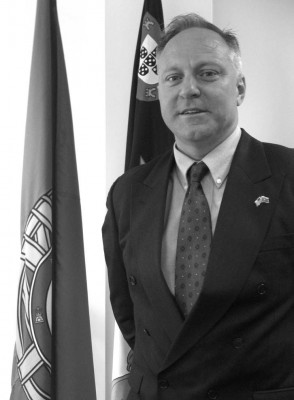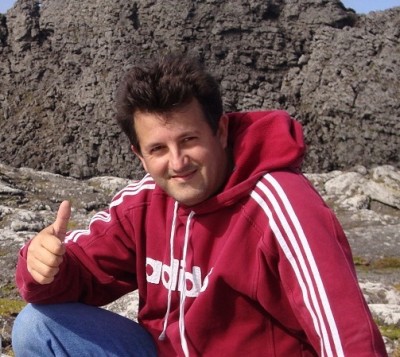Azores Welcomes News of U.S. Science Commitment
Published: 23 May 2012

Assisted by Prof. Eduardo de Brito of the University of the Azores and accompanied by the U.S. Consulate Principal Officer, Rafael Perez, Kim met first with the president of the Azores in Ponta Delgada and received the full support of the local government. The next day, the mayor of Graciosa also gave his permission and support by allocating a significant tract of land for the site, not far from the original AMF deployment site adjacent to the airport.
Azorean print, radio and television covered a media event held to convey the importance and context of this exciting news for the local residents of the Azores. Below is a translated Q&A with Kim from the Azores newspaper, the Açoriano Oriental.
Q: What characteristics will the ARM site have compared to the mobile one that was there before?
A: It will be very similar in most of the instrumentation, although we will be bringing even more advanced instruments; the best for the type of research we are carrying out. After all, we are talking about a 14 million dollar investment in infrastructure and instruments to be installed at Graciosa. We will also have an operational budget for an undetermined time for operations at Graciosa. We are expanding our operational model in comparison to our first experience on the Island.
Q: What are the advantages in having a station of this type on Graciosa?
A: First of all, the good environmental quality gives us the possibility of clean air compared to other environments a lot more influenced by environmental pollution being in the U.S. or Europe. That enables us to determine the effects that pollution provokes.
Q: Which were the most important data gathered by the Graciosa station in 2009/2010?
A: First of all, the complexity of the cloud formation over the island. There are many layers of clouds over Graciosa and the Azorean marine environment that we don’t find in more vast territories. That cloud complexity helped us understand the effects pollution has on climate change being an important contribution to the climate models that we are developing in order to understand the global changes that we see. We are doing observations throughout the world and the Azores are an important component of that network.
Q: By what measure is the climate changing? As an example, it used to rain in the Azores in February, but we have been having essentially sunny days…?
A: We need to separate two aspects: one is the feeling of someone saying that he doesn’t remember something such as this; another is the statistics that we have from the last 150 years that tells us that in most times it demystifies those statements. Even so, we have determined that chemicals influence the atmosphere, making it do things that it most likely would not in a pure environment. Those are the changes that we are studying and trying to understand so that we can better estimate them scientifically in computerized modeling.
Q: Economically, what advantages will the installation of this permanent station bring to Graciosa?
A: We will have to hire locals to help us in the operation of the station but the great advantage is that it puts Graciosa on the scientific map, giving it the potential for international investigators to visit it.

The ARM Climate Research Facility is a DOE Office of Science user facility. The ARM Facility is operated by nine DOE national laboratories, including .
Keep up with the Atmospheric Observer
Updates on ARM news, events, and opportunities delivered to your inbox
ARM User Profile
ARM welcomes users from all institutions and nations. A free ARM user account is needed to access ARM data.


















